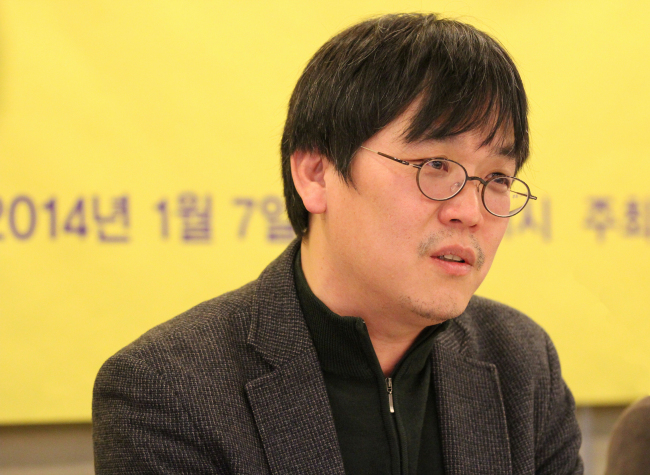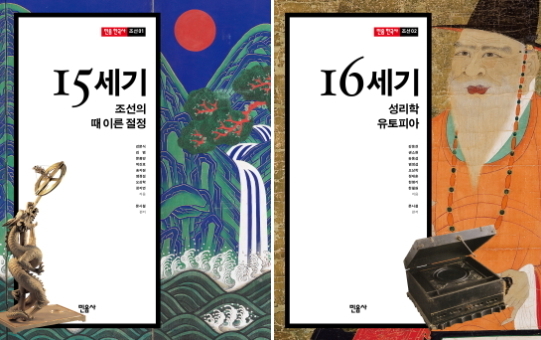Minumsa publishing house introduces grand Korean history book series
Minumsa releases first two volumes of ‘Minum History of Korea’
By Claire LeePublished : Jan. 9, 2014 - 20:14

Minumsa, one of the leading publishing houses in the country, unveiled its ambitious project this week: A new 16-volume series featuring Korean history.
The publishing house introduced the first two volumes of the series on Tuesday, one featuring 15th century Joseon and the other on the 16th century. The remaining 14 installments will hit local bookstores over the next three years.

“For the last 50 years, we have been publishing a lot of books on philosophy and literature, not too many on history,” said Jang Eun-soo, the chief editor of Minumsa, during a press conference in Seoul.
“One of the reasons why we are publishing the series is that there have been a lot of ideological disputes over Korean history, and many took very nationalistic approaches whenever they wrote about it. But the quality of research on Korean history has improved dramatically in recent years, and we thought it would be meaningful to publish a series that offers an objective interpretation of Korean history along with an overview of how it is connected to world history.”
It took Minumsa three years to organize the 3 billion won ($2.8 million) project involving many scholars who specialize in Korean history. The series dedicates a total of five volumes to the period ranging from prehistory to the 9th century, another five volumes to the Goryeo Dynasty (from the 10th century to the 14th century), and another five on the Joseon era (from the 15th century to 19th century.) Its 16th volume will feature 20th century Korea.
“We wanted to start from scratch when we kicked off this project,” said Kang Eung-cheon, a representative of Munsachol Project, who took part in the series. “And organizing Korean history by the century gave us an opportunity to gain new insights into the history of Joseon in relation to what was going on in other countries in the world.”
The newly published series also pays attention to the history of art, science, architecture and music on top of political and social affairs. Readers can find information about Joseon’s astronomy, white porcelain, court music and hunminjeongeum, the Korean alphabet invented by Sejong the Great (1397-1450). Each volume deals with famous Korean figures of the time period as well as ones in world history. It enables the readers to learn about the lives of Korean figures and how they were similar to or different from those who lived in other countries in the same period.
For example, Leonardo Da Vinci (1452-1519) was born two years after Sejong the Great died in 1450. Joseon’s scholar-official Seong Sam-mun (1418-1456), who was executed for plotting to dethrone King Sejo (1455-1468) in an attempt to restore his predecessor King Danjong (1452-1455), was six years older than France’s Joan of Arc (1412-1431).
A total of nine scholars, each specializing in different fields of Korean history, co-authored the volume on 15th century Joseon, while eight historians worked on the volume on 16th century Joseon. Each historian wrote one or two chapters assigned to them according to their specialties. All submitted texts were edited to connect the chapters smoothly and deliver a consistent theme in each volume.
“We tried to provide information that has been verified and proven by a wide spectrum of historians in the country,” said chief editor Jang, when asked about the series’ political objectiveness.
By Claire Lee (dyc@heraldcorp.com)









![[Hello India] Hyundai Motor vows to boost 'clean mobility' in India](http://res.heraldm.com/phpwas/restmb_idxmake.php?idx=644&simg=/content/image/2024/04/25/20240425050672_0.jpg&u=)








